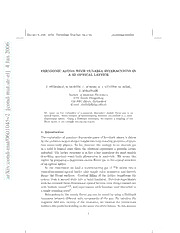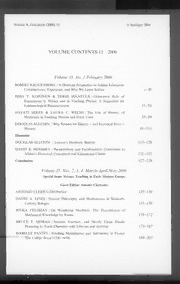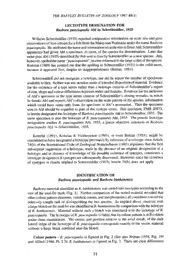
The identities of Rasbora paucisqualis Ahl in Schreitm¸ller, 1935 and Rasbora bankanensis (Bleeker, 1853), with the designation of a lectotype for R. paucisqualis (Teleostei: Cyprinidae) PDF
Preview The identities of Rasbora paucisqualis Ahl in Schreitm¸ller, 1935 and Rasbora bankanensis (Bleeker, 1853), with the designation of a lectotype for R. paucisqualis (Teleostei: Cyprinidae)
THE IDENTITIES OF RASBORA PAUCISQUALIS AHL IN SCHREITMULLER, 1935, AND RASBORA BANKANENSIS (BLEEKER, 1853), WITH THE DESIGNATION OF A LECTOTYPE FOR R. PAUCISQUALIS (TELEOSTEI: CYPRINIDAE) ABSTRACT. - Rasbora paucisqualis has been misidentified or confused with R. bankanensis since its description; evidence is presented demonstrating that R.paucisqualis and R. bankanensis are separate species, easily separable by colour patterns, vertebral counts and morphometrics. Most information in the literature attributed to R. bankanensis likely pertains to R. paucisqualis. The confusion between R. paucisqualis and R. bankanensis probably isaresult of the earlier inaccessibility oftype materials. Rasbora paucisqualis has not been reported from Malaysia since its description in 1935 but samples reported onherein suggest itiswidely distributed in southern Malaysia. The holotype ofRasbora paucisquamis Ahl, 1935, is designated the lectotype of R. paucisqualis Ahl in Schreitmtiller, 1935, an action which makes R. paucisquamis ajunior objective synonym of R. paucisqualis. Rasbora paucisqualis (=R. paucisquamis Ahl, 1935; see Kottelat, 1989) has not been reported from Malaysia since its description (Kottelat, 1991). Furthermore, other than its description, the referral of some material from Kampuchea to this species (Kottelat, 1985) is apparently the only additional record of the species in nature. Recently, an unidentified sample of Rasbora in the collections of The Natural History Museum, London, collected in Malaysia in 1984, was compared to a syntype of R. paucisqualis. Because of similarities in scale counts and aclose correspondence ofcolour pattern itwas concluded theunidentified material isconspecific with the syntype. Afortuitous comparison ofthe sample with another from Malaysia, identified as R. bankanensis (Brittan, 1954; CAS 139380), lead to the surprising conclusion that all were representatives of the same species. However, none of the specimens from either sample possess the large distinctive black blotch on the anal fin Darrell J.Siebert -Department ofZoology, The Natural History Museum, Cromwell Road, London SW7 5BD, U.K. the holotype of Rasbora bankanensis exhibits. A wider survey of samples identified as R. bankanensis revealed some material with alarge black anal-fin blotch similar to that of the holotype of R. bankanensis, other without (Fig. 1). A wider investigation of the material produced evidence which supports the recognition of R. bankanensis and R. paucisqualis as separate species. Fig. 1. Diagrammatic representation oftheextentofpigmentation oftheanalfinofR.bankanensis (A) and R.paucisqualis (B). It is likely that only a single specimen of the type series of R. paucisqualis remains extant. This specimen is also the holotype ofR.paucisquamis. In order to permanently and unequivocally associate the two names, a lectotype designation is made to render R. paucisquamis Ahl, 1935 ajunior objective synonym of R. paucisqualis. Colour pattern terminology follows Brittan (1954); vertebral counts follow Siebert (1991) with the exception that dorsal- and anal-fin positions aretaken through their respective origins. Institutional acronyms are asfollows: CAS -California Academy ofSciences, San Francisco; BMNH - The Natural History Museum, London; 2MB- Museum for Naturkunde, Berlin; ZRC - Zoological Reference Collection, National University of Singapore, Singapore. Materials examined of Rasbora paucisqualis -Lectotype (holotypeofRasborapaucisquamis), 2MB 20873,Malayische Halbinsel,colI.W.Schreitmiiller,Jan.1935. Malaysia,Johore: 13ex.,CAS 139380,SimpangRengam, colI.A.W.Herre, 13Oct.l940; 8ex.,BMNH 1995.5.14:101-107,86km N.ofJohore Bahru, east oftheroadMersing toJohore Bahru,poolatthesideofalargeriver, colI. A.&B.Brown,1984;6ex,ZRC14405-14410,streamlOminE. ofKulai,colI.P.K.L.Ng, 14Mar.1990; 11ex,ZRC21290-21307, SungeiSelangi, 15kmKotaTinggi-Tg.SediliRd.,colI.P.K.L.NgetaI., 22Apr.1992. Malaysia, Selangor: 25ex,ZRC 27626-27650, SabakBernam, Sungei Bernam,colI. P.K.L.NgetaI., 19Sep.1992. Malaysia, Pahang: 12ex,ZRC 14259-14270,TamanNegara,Sungei Keniam at Kuala Perkai, colI. K.Lim & K. Whooley, 1Apr.1991. Materials examined of Rasbora bankanensis - Holotype, BMNH 1866.5.2:160, Banka (Indonesia). Malaysia, Johore: 7ex., ZRC 21290-21307, Sungei Selangi, 15kmKotaTinggi -Tg. SediliRd., colI.P.K.L. Nget aI.,22Apr.1992. Indonesia, PulauBanka: 7ex.,ZRC31280-31286, 28km N.ofPayung, colI.M. Kottelat etaI.,5Mar.1993; 15ex.,ZRC31214-31228, 5.5kmN.of Payung, colI.M. Kottelat et aI.,5 Mar.1993. Indonesia, Pulau Batam: 14of 70 ex., ZRC 14092, BatamN.W.,colI.P.K.L.Ng&K.Lim,25Feb.1991. Indonesia, KalimantanBarat(Borneo):9ex., BMNH 1982.3.29:55-64, Sungai Kenyatan, shaded forest tributary of SungaiLandak, 65kmNE of Pontianak and27kmbyroadWofNgabang,0024'N, 109°44.5'E, Kapuas 1976-8,colI.T.R.Roberts & S.Wirjoatmodjo, 14Ju1.1976. LECTOTYPE DESIGNATION FOR Rasbora paucisqualis Ahl in Schreitmiiller, 1935 Wilhelm Schreitmtiller (1935) reported comparative information on scale size and gave observations oflive colours for afish from the Malaysian Peninsula under the name Rasbora paucisqualis. He attributed thename and information onscale size toErnst Ahl; Schreitmtiller apparently had given Ahl a specimen, in spirit, of the species for determination. Later that same year Ahl (1935) described the fish sent to him by Schreitmtiller as anew species. Ahl, however, spelled the name "paucisquamis", inclear reference tothelarge scales ofthe species. Kottelat (1989) has pointed out that the spelling in Schreitmtiller (1935) is the valid name, because it appeared first, despite its inappropriateness (Brittan, 1954). ~'~ .\ Schreitmtillet did not designate a holotype, nor did he report the number of specimens available tohim. Neither was anymention made ofintended disposition ofmaterial. Evidence for the existence of a type series rather than a holotype consists of Schreitmtiller's report of size, shape and colour differences between males and females. Evidence for the inclusion ofAhl's specimen in the type series consists of Schreitmtiller's closing remarks, in which he thanks Ahl and reports Ahl' sobservation on the scale pattern of the species, information which could have come only from the specimen in Ahl's possession. Thus the specimen sent to Ahl should be regarded as part of the syntype series. This specimen, 2MB 20873, is herein designated the lectotype of Rasbora paucisqualis Ahl in Schreitmtiller, 1935. The same specimen is also the holotype of R. paucisquamis Ahl, 1935. The present lectotype designation renders R. paucisquamis Ahl, 1935, a junior objective synonym of Rasbora paucisqualis Ahl in Schreitmtiller, 1935. Kottelat (1991), Kottelat & Vidthayanon (1993), or even Brittan (1954), might be considered tohave designated alectotype previously by inference of aholotype since Article 74(b) of the International Code of Zoological Nomenclature (1885) stipulates that the first subsequent suggestion of a holotype, made in the absence of an original designation of a holotype and in absence of knowledge of the possible existence of syntypes, constitutes a lectotype designation ifsyntypes are subsequently discovered. However, since the existence of syntypes is clearly implied in Schreitmtiller (1935) Article 74(b) does not apply. IDENTIFICATION OF Rasbora paucisqualis and Rasbora bankanensis Rasbora material identified asR. bankanensis was sorted into two types according to the size of the anal-fin mark (Fig. 1). Further comparison of the sorted material revealed that other colour pattern elements, vertebral counts, and morphometries allcontribute toward the relatively simple task of distinguishing the two species. As implied above, material with alarge blotch onthe anal finwas identified asR. bankanensis bycomparison with the holotype of R. bankanensis. Material without such a blotch was associated with the lectotype of R. paucisqualis. The lectotype ofR.paucisqualis isfaded, but its colour pattern is still evident under close examination. The extent, and position relative to the axial streak, of the dark lateral stripe of the lectotype of R. paucisqualis corresponds exactly to the recent material without a large black subdistal anal-fin blotch. Colour pattern - R. paucisqualis is figured in Fig. 2 (See also Brittan (1954, Fig. 19) and Alfred (1966, PI. 2.2); R. bankanensis is figured in Fig. 3. There are clear differences • • ••• Fig. 2. A. Lectotype of R.paucisqualis Ahl in SchreitmUlIer, 1935, 2MB 20873, 39.1 mm SL. B. A recent formalin fixed specimen of R. paucisqualis, BMNH 1995.5.14: 101-107, 32.2 mm SL. between the species in anal-fin markings and in the intensity and position of the dark lateral stripe. Rasbora bankanensis possesses a large subdistal black blotch on the anal fin which includes the 1st, 2nd, and 3rd principle fin-rays and their interradial membranes (Fig. la). Some, but not all, material of R. paucisqualis have a much smaller, elongate dark mark on the 1stprincipal ray of the anal-fin (Fig. lb) - in effect, a black streak. The differences in markings of the anal fin are apparent in size series of each species, from less than 10mm SL to the largest specimens available. Alfred (1969) reported black markings on the anal fin of R. bankanensis only in juveniles and Brittan (1955) reported its anal fin to be only weakly marked. Absence of an anal-fin blotch in larger specimens of either species is not supported by present material, nor is the anal fin of R. bankanensis weakly marked. These reports might be aresult offailing todistinguish the two species. Material ofR.paucisqualis among the present samples is larger, in general, than that of R. bankanensis. Thus, if the two species were not distinguished, it would be reasonable to conclude that the size of the anal-fin blotch diminished with increase in body size as R. paucisqualis appears to be a larger species, yet possesses a much smaller blotch on the anal fin. The dark lateral stripe ofR.paucisqualis isvery intense onthe posterior half of the body, becoming much fainter anterior to the dorsal fin. The axial streak shows a similar pattern - more evident posteriorly, less so to faint anteriorly. The dark lateral stripe of R. bankanensis is much less intense, and exhibits much less contrast between its anterior and posterior portions. The dark lateral stripe of R. paucisqualis slightly overlaps the axial streak on the caudal peduncle. Its anterior, less intense portion is situated well below the axial streak. The dark lateral stripe of R. bankanensis broadly overlaps the axial streak on the caudal peduncle by as much as 60% of its width. It is not separated from the axial streak anteriorly. Vertebral counts - Vertebral counts, fin positions, and number of ribs are reported in Table I. Rasbora paucisqualis and R.bankanensis possess quite different vertebral patterns. Rasbora bankanensis possesses, on average, one less vertebra than R. paucisqualis. That italso possesses one less abdominal vertebra, one less rib, and its pelvic fins are positioned one vertebra further forward than inR.paucisqualis suggests the difference intotal vertebral number results from the possession of one less abdominal vertebra anterior to the pelvic fin. Against the background of fewer total vertebrae than R. paucisqualis, the modal count of caudal vertebrae is higher for R. bankanensis than for R. paucisqualis. In particular, R. bankanensis possesses one more peduncular vertebra. The anal fin of R. bankanensis is positioned two vertebrae forward of that of R. paucisqualis. Possession of one fewer abdominal vertebra can account for half (one vertebra) of the further forward placement of the anal fin in R. bankanensis. Possession of one more peduncular vertebra suggests the additional one vertebra difference can be accounted for by a shift forward of one vertebra ofthe anal finitself. There isthus merit inenumerating caudal vertebrae and anal-fin position Table I. Verrebral counrs, fin posirions reponed as posirion along rhe vertebral column, and the number ofribs for R.paucisquaiis and R.bankanensis; the value forthe type isfollowed by the mean, standard deviation, and range, reported as the minimum and maximum observation. All means are significantly different (t-test) at p < .00I except number of caudal vertebrae (p = .05) and position of the dorsal fin, which was not different between the species. R. paucisqualis R. bankanensis n=46 n=40 Vertebral number 32' 31.9±0.4S (31-33) 31 311±0.SS (30-33) Abdominal vertebrae IS 14.9±0.44 (14-16) IS 13.9±0.61 (13-15) Caudal vertebrae 17 16.9±0.60 (16-IS) 16 17.2±0.66 (1S-IS) Peduncular venebrae S 7.S±0.64 (7- 9) 7 S.6±0.72 (7-10) Dorsal-fin position 9 9.0±0.20 (9-10) LO 9.0±0.4S (S-IO) Anal-fin position L6 lS.9±0.62 (13-17) 16 14.2±0.SS (13-16) Pelvic-fin position S S.2±0.47 (7- 9) 9 7.4±0.S4 (7- 9) Rib number II 11.0±0.49 (9-12) 10 9.S±0.S9 (9-1I) I Katte/at & Vidthayanon (1993) erroneously report 33. 33 .•.. ~ ~ iIi * IooI: <> 810 ~o CD C B CD -2 l>1 -2 oCIB v Ii A 4 +3 x 2 o 1 -2 \ 2 -2 2 SCcjlE(2) SCORE(2) Fig. 4. Discriminant analysis of vertebral data (variables asinTab. 1)for samples ofR.paucisqualis and R. bankanensis. Standardised canonical discriminant functions are: Axis 1-abvert 0.621, afin 0.579, caudv 0.179, pedv -0.229, ribs 0.207, pelfil} -0.145; Axis II- abvert 0.759, afin 0.473, caudv 0.611, pedv 0.420, ribs -0.353, pelfin -0.716. Axes 1 and 2 account for 88% of dispersion. A. Confidence ellipses (p = .95) of individual sample centroids in the discriminate space of Axes 1and 2;R.paucisqualis <= 5;R. bankanensis >= 6. B. Confidence ellipses (p = .80) for grouped samples (by species) of R. paucisqualis (= 1) and R. bankanensis (= 2); axes identical to A. along the vertebral column independently for Rasbora species. The pattern of these differences between the species is summarised visually in Figure 4. Morphometries - Selected morphometries for R. paucisqualis and R. bankanensis are reported in Table 2. Rasbora bankanensis has a longer head and larger eye than R. paucisqualis. The difference in anal-fin positions in terms of anal-fin position along the vertebral column isreflected in the much shorter preanal length observed forR. bankanensis. Table 2. Selected morphometric variables reported aspercent standard length forR.paucisqualis and R.bankanensis; the mean isfollowed by the standard deviation with therange, reported astheminimum and maximum observation, recorded in parentheses. R. paucisqualis R. bankanensis n=44 n=26 Head length 27.0±1.30 (24.4-29.7) 29.l±0.85 (27.2-30.4) Eye length 8.8±0.91 (6.9-10.7) 1O.9±0.75 (9.6-12.4) Predorsal length 54.9±0.96 (52.7-56.6) 56.3±1.l7 (54.6-59.6) Preanal length 68.6±1.76 (65.2-73.2) 65.3±1.70 (62.0-67.0) Scale counts -R.paucisqualis and R. bankanensis are characterised by rather low lateral line scale counts. Counts reported in Brittan (1954) for R. bankanensis actually apply to R.paucisqualis. Modal counts oflateralline scale counts forR. bankanensis material included herein are even lower (mode followed by the range expressed asthe minimum and maximum observation: lateral line 23, 22-24; lateral series 25, 23-26; and pored scales 22,17-23 vs. lateral line 24, 20-25; lateral series 26, 24-28; and pored scales 25, 22-27 forR.paucisqualis. The species identified asR.paucisqualis andR. bankanensis inthis study differ trenchantly in colour patterns, vertebral patterns, and morphometrics. The colour pattern differences are obvious even at very small sizes « 10 mm SL); thus, identification of specimens of juveniles should not be problematic. There can be little doubt that R. paucisqualis and R. bankanensis are separate species. They are separable by a diverse array of characters, highly likely to be independent of one another, that are consistent across each species' geography. Each species was represented by at least four populations from widely separated localities, at one of which they were sympatric. The cplour;·vertebral (Fig. 4), and morphometric patterns are allconsistent within and between sp2cies among populations across their distributions. All populations of one are more similar to each other than any population ofthe other species; R. bankanensis from Kalimantan Barat are more like R. bankanensis from Pulau Banka than they are to any population of R. paucisqualis. Given thejournal in which R.paucisqualis was described and the state of world politics at the time of publication it is perhaps not surprising that the ichthyological community initially was unaware of its description, nor, perhaps, of that ofR.paucisquamis (e.g. Herre &Myers (1937) misidentified material ofitasRasbora lateristriata). Subsequent confusion of material of R. paucisqualis with R. bankanensis is more problematic. Initially it may have been an extension of earlier misidentifications but almost certainly could eventually only be aconsequence of inaccessibility of the types of R. paucisqualis (see Brittan, 1955; housed in Berlin) and R. bankanensis (see Brittan, 1954; housed in London). Confusion of the two species since 1955 almost certainly follows Brittan. Alfred (1969), however, was aware of the possibility of confusion (pers. com. through P.K.L. Ng) and only included R. paucisqualis in the synonymy of R. bankanensis with question marks. There probably is no better demonstration of the necessity, even when very difficult, to check type material than the six decades of confusion over the identities of these two species. Based on material included in this study, and on the redetermination by K. Lim (ZRC) ofmaterial previously reported asR. bankanensis (Lim &Ng, 1990; Lim etaI., 1990; Kottelat et aI., 1992 in part), R. paucisqualis is widely distributed over the Malay Peninsula; it is known from Singapore and the Malasian states of lohor, Pahang, Selangor, Kelantan and Terengganu. Ifthe referral (Kottelat, 1985) of some Kampuchean material toR.paucisqualis is correct the species may well be widely distributed over mainland South East Asia, though Kottelat now doubts the identification (pers. com.). Reports that R. bankanensis is widely distributed over peninsular Malaysia (Brittan, 1955; Alfred, 1969) are probably based on misidentifications ofR.paucisqualis, and thus may beoverstated. Redetermination ofmaterial previously identified as R. bankanensis (as above) is required to confirm the extent of its distribution. Material ofR. bankanensis included inthis study originates from Pulau Banka, Pulau Batam, the southern tip of peninsular Malaysia and Kalimantan Barat. Tan & Tan (1995) report the species present also on Pulau Bintan, Indonesia and P. Ng and K. Lim (pers. com.; ZRC) confirm it from Pulau Lingga and Terengganu and Sarawak states, Malaysia. The distributions ofR.paucisqualis andR. bankanensis overlap insouthern (lohor) and eastern (Terengganu) peninsular Malaysia. Whether the distribution ofR.paucisqualis extends beyond peninsular Malaysia to areas inhabited by R. bankanensis to the south and east isn't known, nor isitknown ifthedistribution ofR.bankanensis includes thenorthwestern areas of peninsular Malaysia inhabited by R. paucisqualis. Both R.paucisqualis and R. bankanensis are thought tobe members ofthe R. trifasciata- group (Brittan, 1954; Kottelat &Vidthayanon, 1993). This group is characterised, in part, by rather low lateral line scale counts (Brittan 1954). Within the R. trifasciata-complex R. paucisqualis is remarkably similar in body shape to R. trifasciata, R. hubbsi, R. rutteni, R. meinkeni, and an undescribed species from the Barito River, Kalimantan Tengah (Siebert & Guiry, 1996), a subgroup characterised by alateral stripe that terminates in adistinctive precaudal blotch. However, R. paucisqualis lacks this precaudal blotch (Fig. 2) and thus cannot at present be placed within this subgroup. Absence of the a precaudal blotch does not however exclude R. paucisqualis from a close relationship with the group. Lothar Seegers generously provided English translations of Schreitmiiller (1935) and Ahl (1935); Dr. Anthony Gill (BMNH) discussed various issues concerning the lectotype designation; and Dr. Hans Paepke (ZMB) kindly lent the holotype of R.paucisquamis. Dr. Maurice Kottelat provided an informative and helpful review. Dr. Peter Ng and his students at the National University of Singapore are warmly acknowledged for their assistance, especially for checking the identity of material previously identified as R. bankanensis. Alfred, E., 1969.The Malayan cyprinoid fishes of the sub-family Rasborinae. Fed. Mus. Jr., (New Series), 14:99-122. Brittan,M., 1954.Arevision oftheIndo-Malayan fresh-waterfishgenusRasbora. Monogr. Inst. Sci. Tech. Manila, 3:1-224 +3maps. Herre, A. & G. S. Myers, 1937.A contribution tothe ichthyology of theMalay Peninsula. Part II. Fresh-water fishes. Bull. Raffles Mus., 13:53-75, PI.V-VIII. International Commission on Zoological Nomenclature, 1985. International Code of Zoological Nomenclature, 3rd Ed. International Trust for Zoological Nomenclature, London. 338p. Kottelat, M., 1989.Zoogeography of the fishes from Indochinese inland waters with an annotated check-list. Bull. Zool. Mus. Univ. Arnst., 12:1-56. Kottelat, M., 1991.Notes on the taxonomy of some Sundaic and Indochinese species ofRasbora, withdescription offournewspecies(Pisces:Cyprinidae).Ichthyol. Explor. Freshwaters, 2:177-191. Kottelat, M., P. K. L. Ng & K. K. P. Lim, 1992. Recent collections of freshwater fishes from Terengganu, Peninsular Malaysia. Malay Nat., 46:7-12. Kottelat,M.&C.Vidthayanon, 1993.Boraras micros, anewgenusandspeciesofminutefreshwater fish from Thailand (Teleostei: Cyprinidae). Ichthyol. Explor. Freshwaters, 4:161-176. Lim, K. K. P. &P.K.L. Ng, 1990.A guide to thefreshwater Fishes of Singapore. Singapore Science Centre, Singapore. 160 p. Lim, K. K. P., P.K.L. Ng & M. Kottelat, 1990. On a collection of freshwater fishes from Endau- Rompin, Pahang-Johore, Peninsular Malaysia. Raffles Bull. Zool., 38:31-54. Ng, P.K.L. & K.K.P. Lim, 1994. Freshwater fishes of Batam Island, Indonesia. Malay. Nat., 48: 6-8. Schreitmuller, W., 1935. Neuimporte 2. Rasbora paucisqualis E. Ahl (GroBschuppiger Biirbling). Wschr. Aquar. Terrariek., 32: 97-98. Siebert, D., 1991. Acantopsis octoactinotos, a new species of horse-faced loach (Cypriniformes: Cobitidae) from Sabah, 'Malaysia. Copeia, 1991: 910-915. I'. Siebert, D. & S. Guiry, 1996. Rasbora johannae (Teleostei: Cyprinidae), a new species of the R. trifasciata-complex from Kalimantan, Indonesia. Cybium, 20: 395-404. Tan, S. H. &H. H. Tan, 1995. The freshwater fishes of Pulau Bintan, Riau Archipelago, Sumatera, Indonesia. Trap. Biodivers., 2: 351-367. Received 05 Nov 1996 Accepted 08 Jan 1997
The list of books you might like

Mind Management, Not Time Management

The 48 Laws of Power

Can’t Hurt Me: Master Your Mind and Defy the Odds

The Sweetest Oblivion (Made Book 1)
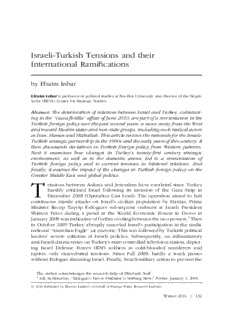
Israeli-Turkish Tensions and their International Ramifications

Évaluations formative et certificative des apprentissages

Hindi Kahanikaro Ke Kathachintan Ke Sandrabh Main Unke Kahani Sahitya Ka Mulyakan

Gluten-Free Bread

The Annotated Big Sleep
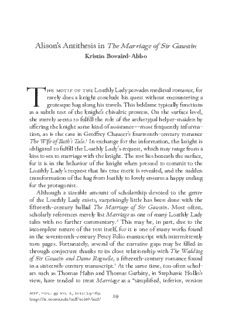
Alison's Antithesis in The Marriage of Sir Gawain

UFO Mail No 079 2006

C anton (©bsferVitr

C anton O bsierber

C anton €>bserUer Supporters to lobby for airport purchase
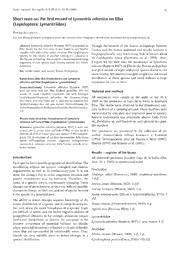
Short note on the first record of Lymantria atlantica on Elba

C anton €>bSerUer Board OKs 3 officer spots; new dispatch
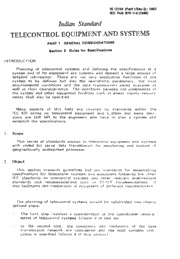
IS 12746-1-2: Telecontrol equipment and systems, Part 1: General considerations, Section 2: Guide for specifications

Union Government, Extraordinary, 2006-01-27, Part II-Section 3-Sub-Section(ii), Ref. 96(E)

What Fraction of Boron-8 Solar Neutrinos arrive at the Earth as a nu_2 mass eigenstate?
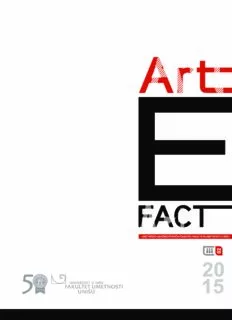
artefakt 2a.indd
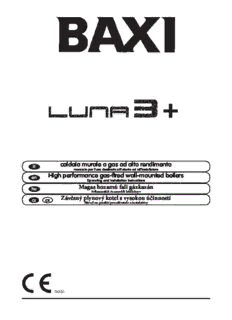
caldaia murale a gas ad alto rendimento Závěsný plynový kotel s vysokou účinností Magas
